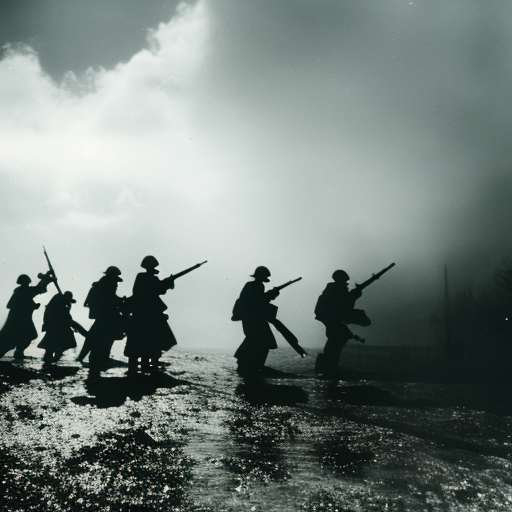Battle of Dreux: A Clash of Religious Factions
The Battle of Dreux, which took place on December 19, 1562, was a significant event during the French Wars of Religion. It was fought between the Huguenots, French Protestants led by Louis I de Bourbon, Prince of Condé, and the Catholics, led by Anne de Montmorency, Constable of France, and Francis, Duke of Guise.
Background:
The French Wars of Religion were a series of conflicts between the Catholic majority and the Protestant minority in France during the 16th century. The battle of Dreux was one of the earliest and most important battles of this period. It was part of the larger struggle for power between the Catholic Valois dynasty and the Protestant Bourbon family.
The Huguenot Offensive:
In the early stages of the conflict, the Huguenots had gained significant ground, capturing several cities and fortresses. Encouraged by their success, they decided to launch an offensive against the Catholic forces in an attempt to secure their position and gain more political influence.
The Catholic Counterattack:
The Catholics, led by the Constable of France and the Duke of Guise, were determined to halt the Huguenot advance. They assembled a formidable army and marched towards Dreux, a strategic town located southwest of Paris. The Catholic forces aimed to crush the Huguenots and regain control of the region.
The Battle:
The battle began with a Huguenot cavalry charge, which initially caught the Catholics off guard. The Huguenots managed to break through the Catholic lines, causing significant casualties. However, the Catholic infantry quickly regrouped and launched a counterattack, pushing the Huguenots back.
The fighting was fierce and chaotic, with both sides suffering heavy losses. The Huguenots, though outnumbered, fought with determination and skill. The battle turned into a brutal hand-to-hand combat, with soldiers using swords, pikes, and firearms.
The Death of the Duke of Guise:
During the course of the battle, the Duke of Guise, one of the most prominent Catholic commanders, was killed. His death had a demoralizing effect on the Catholic troops, and they temporarily lost their momentum. The Huguenots seized this opportunity to launch a fresh assault, pushing the Catholics back.
The Arrival of the Royal Army:
As the battle raged on, news reached both sides that the royal army, led by King Charles IX, was approaching. This caused both the Huguenots and the Catholics to become cautious, as they did not want to risk engaging the king’s forces.
The Stalemate and Retreat:
With the arrival of the royal army, the battle reached a stalemate. Neither side was willing to risk a confrontation with the king’s forces, and both decided to retreat. The Huguenots withdrew to their stronghold in Orléans, while the Catholics returned to Paris.
Aftermath:
The Battle of Dreux was a significant turning point in the French Wars of Religion. It demonstrated the strength and determination of both the Huguenots and the Catholics. The battle ended in a stalemate, with neither side achieving a decisive victory. However, it marked the beginning of a long and bloody conflict that would continue for several decades.
The battle also highlighted the religious divisions within France and the deep-seated animosity between Catholics and Protestants. It set the stage for further confrontations and intensified the religious tensions that would plague the country for years to come.
In conclusion, the Battle of Dreux was a pivotal event in the French Wars of Religion. It showcased the military prowess of both the Huguenots and the Catholics and highlighted the deep religious divisions within France. Despite ending in a stalemate, the battle set the stage for future conflicts and marked the beginning of a long and brutal struggle for power between the two factions.












